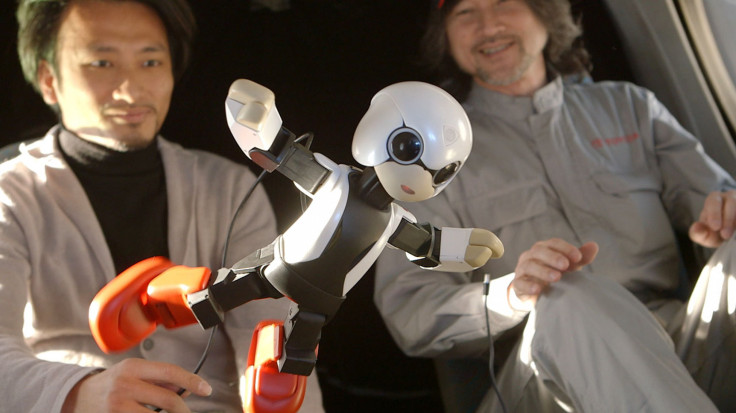Kirobo, A Japanese Talking Robot, Heads To The International Space Station To Give Company To Astronauts Onboard

Do astronauts get bored in space? There will soon be a robot to keep them company.
Japan successfully launched a talking robot, Kirobo, to space on Sunday to provide some local-language comfort to Japanese astronaut Koichi Wakata, when he joins the International Space Station, or ISS, in November.
Kirobo boarded the Kounotori 4 (HTV4) cargo transfer vehicle, which was launched from the Japan Aerospace Exploration Agency's, or JAXA, Tanegashima Space Center in Southern Japan at 3.48 p.m. EDT atop the country's H-2B rocket. The small-sized Kirobo will reach the ISS in six days and will stay there for about 18 months.
Kirobo, which is only 13 inches (34 centimeters) tall and weighs approximately one kilogram, is a part of the Kibo Robot Project, which has been created to develop new technologies to improve robot-human interaction. Japan’s research laboratory module on board the ISS is called “Kibo,” so the name Kirobo is a combination of Kibo and robot, NBC News reported.
“The Kibo robot has a special mission: To help solve the problems brought about by a society that has become more individualized and less communicative,” a post on the project’s website said.
Kirobo and its ground-based counterpart Mirata are built by scientists and engineers at the University of Tokyo's Research Center for Advanced Science and Technology as part of the Kibo Robot Project. The robots have capabilities such as voice recognition, natural-language processing, voice composition, and information and communication functions. In addition, the robots are also equipped with a camera that enables the robot to recognize faces and a camera for video recording.
“Kirobo will remember Mr Wakata's face so it can recognise him when they reunite up in space,” Tomotaka Takahashi, the robot’s developer told BBC News. “I wish for this robot to function as a mediator between a person and machine, or a person and the Internet, and sometimes even between people.”
Inspired by the “Astro Boy,” an animation character, Kirobo will communicate with Wakata in Japanese and will store a record of all the conversations. It will also pass on messages from the control room to the astronaut.
In addition to Kirobo, JAXA’s HTV-4 spacecraft carried about 3.5 tons of supplies, food and equipment for scientific experiments, which the Expedition 36 crew members will offload once the cargo ship reaches the space station on Aug. 9.
© Copyright IBTimes 2025. All rights reserved.






















